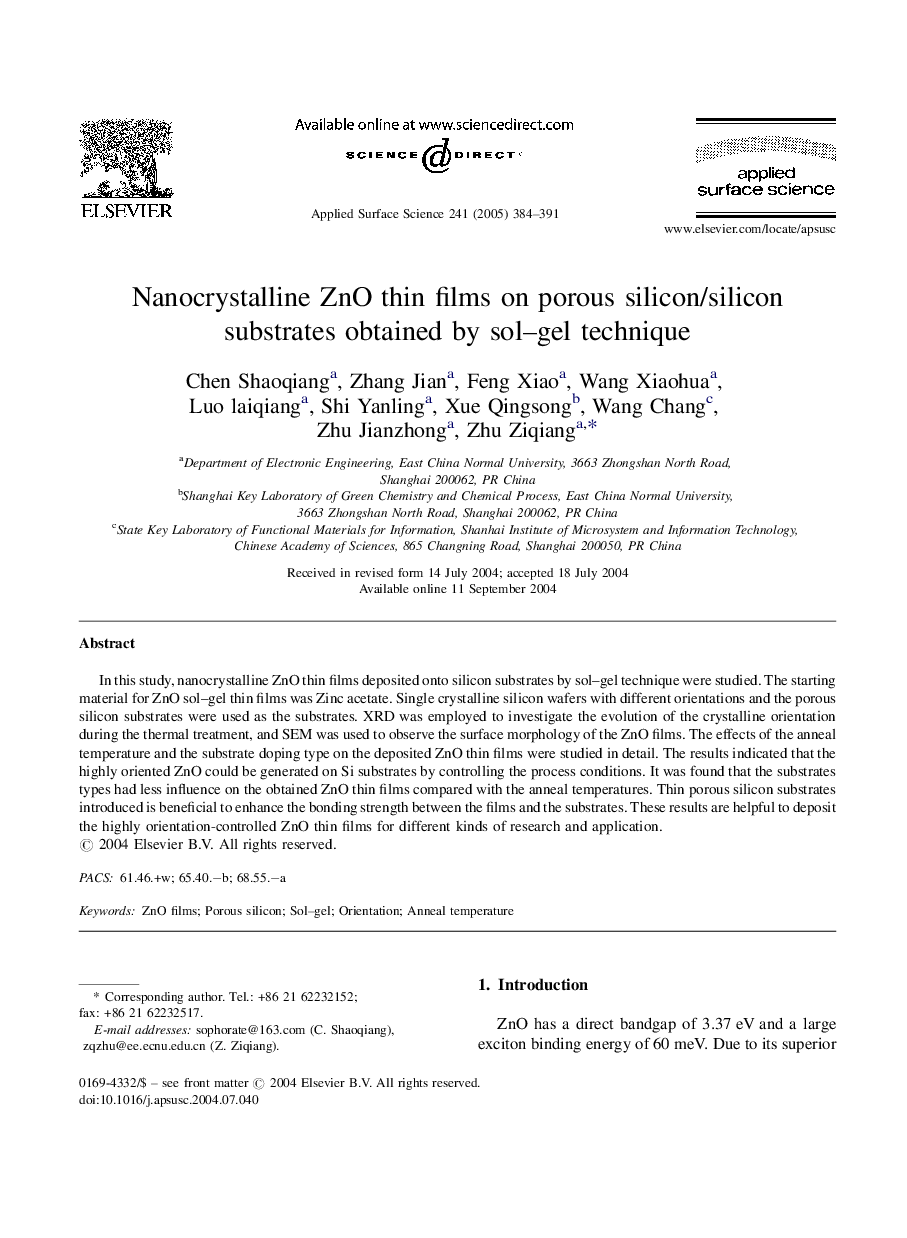| Article ID | Journal | Published Year | Pages | File Type |
|---|---|---|---|---|
| 9567484 | Applied Surface Science | 2005 | 8 Pages |
Abstract
In this study, nanocrystalline ZnO thin films deposited onto silicon substrates by sol-gel technique were studied. The starting material for ZnO sol-gel thin films was Zinc acetate. Single crystalline silicon wafers with different orientations and the porous silicon substrates were used as the substrates. XRD was employed to investigate the evolution of the crystalline orientation during the thermal treatment, and SEM was used to observe the surface morphology of the ZnO films. The effects of the anneal temperature and the substrate doping type on the deposited ZnO thin films were studied in detail. The results indicated that the highly oriented ZnO could be generated on Si substrates by controlling the process conditions. It was found that the substrates types had less influence on the obtained ZnO thin films compared with the anneal temperatures. Thin porous silicon substrates introduced is beneficial to enhance the bonding strength between the films and the substrates. These results are helpful to deposit the highly orientation-controlled ZnO thin films for different kinds of research and application.
Related Topics
Physical Sciences and Engineering
Chemistry
Physical and Theoretical Chemistry
Authors
Chen Shaoqiang, Zhang Jian, Feng Xiao, Wang Xiaohua, Luo laiqiang, Shi Yanling, Xue Qingsong, Wang Chang, Zhu Jianzhong, Zhu Ziqiang,
